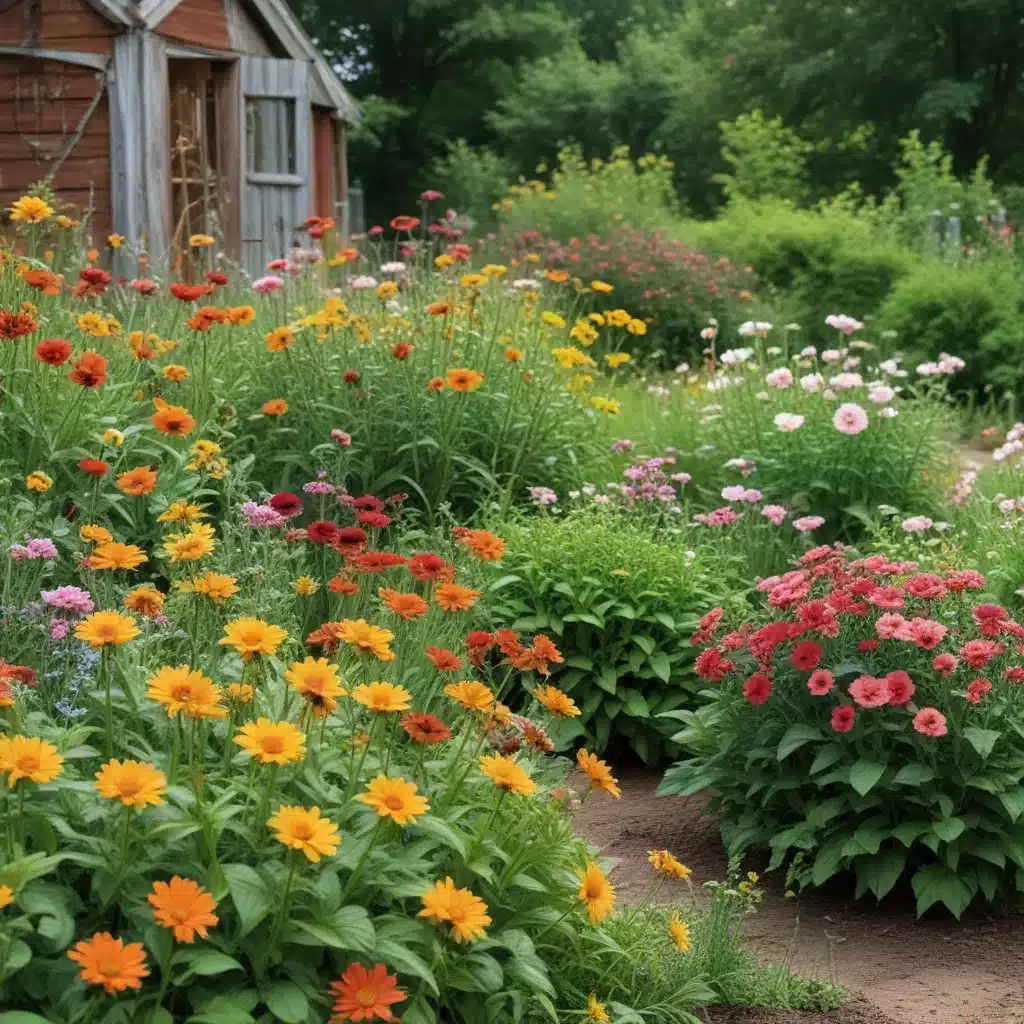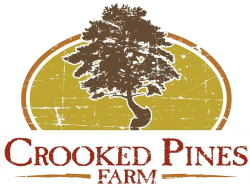
The sweet scent of freshly bloomed zinnias, the texture of fuzzy sage foliage, the drama of bold sunflowers – these are the sensations that fill the air at Crooked Pines Farm’s cutting garden. As a farm educator, I’m thrilled to share our tips for cultivating your own cutting garden, where you can grow a diverse array of flowers to fill your home, surprise your loved ones, or even sell at local markets.
Foundations of Cutting Gardens
Site Selection and Preparation
The first step in establishing a successful cutting garden is choosing the right location. Look for an area that receives at least 6 hours of direct sunlight per day – many flowering plants thrive in full sun exposure. Ensure the site has well-draining soil, as waterlogged conditions can quickly lead to disease and plant loss. If needed, incorporate generous amounts of compost or aged manure to enrich the soil and improve drainage.
Soil Fertility and Amendments
Cutting flowers demand nutrient-rich, fertile soil to fuel their robust growth and abundant blooms. Before planting, have your soil tested to identify any deficiencies. Amend accordingly with bone meal, rock phosphate, or other targeted amendments. Additionally, apply a balanced organic fertilizer every 4-6 weeks throughout the growing season to keep plants thriving.
Irrigation and Water Management
Consistent, deep watering is essential for cutting flowers, whose long stems and abundant foliage require ample moisture. Consider installing a drip irrigation system to efficiently deliver water directly to the root zone. Mulching around plants with 2-3 inches of wood chips or straw can also help retain soil moisture. Avoid overhead watering, which can promote foliar diseases.
Planting and Propagation
Annual Flower Selection
When planning your cutting garden, choose a diverse array of annual flowers that bloom at different times of the season. Some long-blooming favorites include zinnias, cosmos, and sunflowers. Look for unique, florist-quality varieties like ‘Benary Giant’ zinnias or ‘Sensation’ cosmos. Supplement with faster-maturing bachelor buttons, strawflowers, and clary sage to extend the harvest window.
Perennial Flower Cultivation
Incorporate hardy perennial flowers to establish a reliable, multi-year cutting garden. Consider including lavender, peonies, yarrow, and scented geraniums. Many perennials require a period of vernalization (exposure to cold temperatures) to properly flower, so plan your planting accordingly.
Bulb and Tuber Integration
Add seasonal pops of color and texture by planting bulbs and tubers like dahlias, ranunculus, and anemones. These underground storage structures often bloom earlier than seeds, providing a head start on the season. Carefully time their planting to align with your regional climate.
Cultivation Techniques
Spacing and Density
Proper plant spacing is crucial for air flow, light penetration, and ease of harvesting. As a general rule, space annuals 12-18 inches apart and perennials 18-24 inches apart. For a lush, abundant look, consider intensive planting techniques, placing plants closer together and relying on succession sowing to maintain continuous blooms.
Pruning and Deadheading
Regular pruning and deadheading (removing spent flowers) encourages branching, prolific bloom production, and a tidy appearance. After the initial flush of flowers, cut plants back by a third to stimulate new growth. Deadhead diligently to prevent seed set and redirect the plant’s energy into additional blooms.
Integrated Pest Management
While cutting gardens attract beneficial insects like pollinators and predatory bugs, you may encounter some unwanted pests. Practice integrated pest management by first identifying the culprit, then employing a combination of cultural, mechanical, and organic control methods. Avoid harsh pesticides that could harm the natural ecosystem.
Seasonal Considerations
Spring Bloom Optimization
Start your cutting garden off strong by planting cool-season annuals and hardy perennials in early spring. Larkspur, bells of Ireland, and poppies thrive in the mild temperatures, creating a vibrant spring color palette. Succession sow these crops every 2-3 weeks for an extended harvest.
Summer Floral Abundance
As the weather warms, transition to heat-loving zinnias, sunflowers, and dahlias. These prolific bloomers will provide an endless supply of cutting material throughout the summer months. Maintain consistent moisture and fertility to keep plants producing.
Autumn Transitioning
As summer fades, the cutting garden shifts gears. Asters, celosia, and marigolds flourish in the cooler fall temperatures, offering a warm, rich color scheme. Extend the season by protecting plants with floating row covers or cold frames during unexpected frosts.
Harvesting and Post-Harvest Care
Cutting Techniques
Harvest cutting flowers in the cool of the morning, when stems are fully hydrated. Use clean, sharp pruners or knives to make clean cuts just above a set of healthy leaves. Avoid tearing or crushing the stems, which can reduce vase life.
Storage and Conditioning
Immediately submerge freshly cut stems in clean, cool water. For best results, add a floral preservative to the water, which helps maintain freshness. Store the cut flowers in a cool, shaded location until ready to arrange. Mist the blooms periodically to prevent wilting.
Floral Arrangement Design
Bring the beauty of your cutting garden indoors by crafting stunning floral arrangements. Incorporate a variety of flower types, textures, and heights for visual interest. Utilize filler flowers like basil, mint, and bupleurum to add volume and balance. Experiment with different vessel shapes and colors to showcase your vibrant blooms.
Marketing and Monetization
Direct-to-Consumer Sales
If you find yourself with an abundance of cutting flowers, consider selling directly to your local community. Offer bouquet subscriptions, sell at farmers markets, or even host on-farm workshops to share your expertise and passion.
Wholesale Partnerships
Connect with local florists, event planners, and specialty grocery stores to supply them with your premium, farm-fresh flowers. Establish reliable wholesale accounts and negotiate fair, mutually beneficial pricing.
Value-Added Products
Expand your cutting garden offerings by creating value-added products like dried flower wreaths, pressed flower art, or floral-infused bath products. These items allow you to upcycle any surplus blooms and stems.
Sustainability and Stewardship
Pollinator-Friendly Practices
Grow a diverse array of pollinator-attracting flowers to support local bee and butterfly populations. Include cosmos, sunflowers, and clary sage to provide nectar and pollen sources throughout the season.
Organic Certification
Consider pursuing organic certification for your cutting garden to meet the growing demand for sustainably grown flowers. This demonstrates your commitment to environmental stewardship and chemical-free practices.
Waste Reduction Strategies
Minimize waste by composting any plant material, using biodegradable packaging, and exploring closed-loop systems that reintegrate farm byproducts back into the soil. These efforts align with the circular economy principles that are gaining traction in the agriculture industry.
Whether you’re a seasoned farmer or an aspiring gardener, the joy of cultivating your own cutting garden is unparalleled. By thoughtfully planning, planting, and caring for your floral oasis, you’ll be rewarded with an abundant, ever-changing harvest to beautify your home, nourish your community, and connect with the natural world. Crooked Pines Farm is eager to see your cutting garden flourish!


